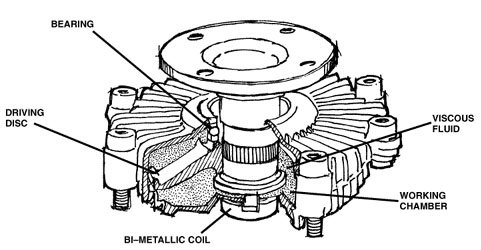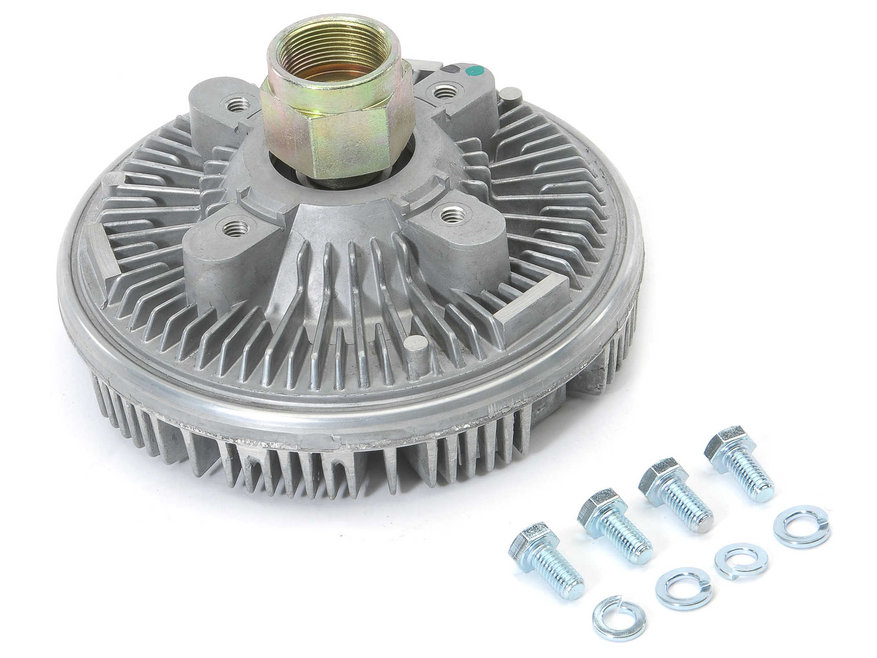
1) Noise - Fan noise is sometimes evident under the following normal conditions:
- When clutch is engaged for maximum cooling.
- During first few minutes after start-up until the clutch can redistribute the silicone fluid back to its normal disengaged operating condition after overnight settling.
Fan noise or an excessive roar will generally occur continuously, however, under all high engine speed conditions (2500 rpm and up) if the clutch assembly is locked up due to an internal failure. If the fan cannot be rotated by hand or if there is a rough grating feel as the fan is turned, the clutch should be replaced.
2) Looseness - Under various temperature conditions, there is a visible lateral movement that can be observed at the tip of the fan blade. This is a normal condition due to the type of bearing used. Approximately 1/4" (6.5 mm) maximum lateral movement measured at the fan tip is allowable. This is not cause for replacement.
3) Silicone Fluid Leak - The operation of the unit is generally not affected by small fluid leaks which may occur in the area around the bearing assembly. If the degree of leakage appears excessive, however, proceed to item 4.
4) Engine Overheating - If the fan and clutch assembly free-wheels with no drag (revolves over five times when spun by hand), the clutch should be replaced.
How To Tell If A Fan Clutch Is Defective:1) Check for oil streaks (or dust collected on oil streaks) on the fan clutch - It's a sure sign that the internal fluid that provides the clutch action is leaking.
2) Check for a worn bearing - Grasp the fan blade on either end, with the engine off, and check for lateral movement. If there's more than 1/4" of side-to-side movement, the bearing is worn and the unit needs replacement.
3) Check for proper fan clutch operation - First, run the engine until operating temperature is reached. Next, with the engine off, give the fan blade a gentle spin. If it rotates more than twice, the clutch is worn and needs replacing. If fan rotation is rough or noisy, or the fan fails to turn, the unit is worn out and needs replacement.





















